
DIY Herbal Wax Sachets for the Home and Gifting
We, herbalists, are always looking for practical ways to capture the beauty, splendor, and awakening we experience when barefoot and intertwined with our herb gardens. The rub of a single mint leaf or the brush of a hand against rosemary or lavender growing in the garden fills our senses with delightful aroma instantly. Our encounters with herbs can be most refreshing!
Outside of the verdant sanctuary of the garden bower, our home, work, school, and other places the day takes us are typically void of such vital aromatics
It is no wonder there are so many products designed to tease our senses into momentary, pretend pleasure.
Take, for example, automatic misters found in nearly every public bathroom, plastic wall plugin bulbs, and car vent devices that are tossed after the scent dissipates. While the latter creates unnecessary waste, all of these air fresheners also add up to significant hazards for our health and environment (Amerelo & Geller, 2018).
That’s right. Most store-bought air fresheners like those listed above contain hormone-disrupting phthalates and carcinogenic chemicals (Farley, 2016). However, filling our homes with refreshing aromas doesn’t need to involve saturating the air with chemicals that can negatively impact our health. Instead, we can turn to herbs.
Creating Herbal Wax Sachets: An Eco-Friendly Air Freshener
Just like a simmering herbal potpourri mixture of dry, natural ingredients that you boil in water, herbal wax sachets will freshen the air without the use of chemicals, making a better impact on your health and the environment.
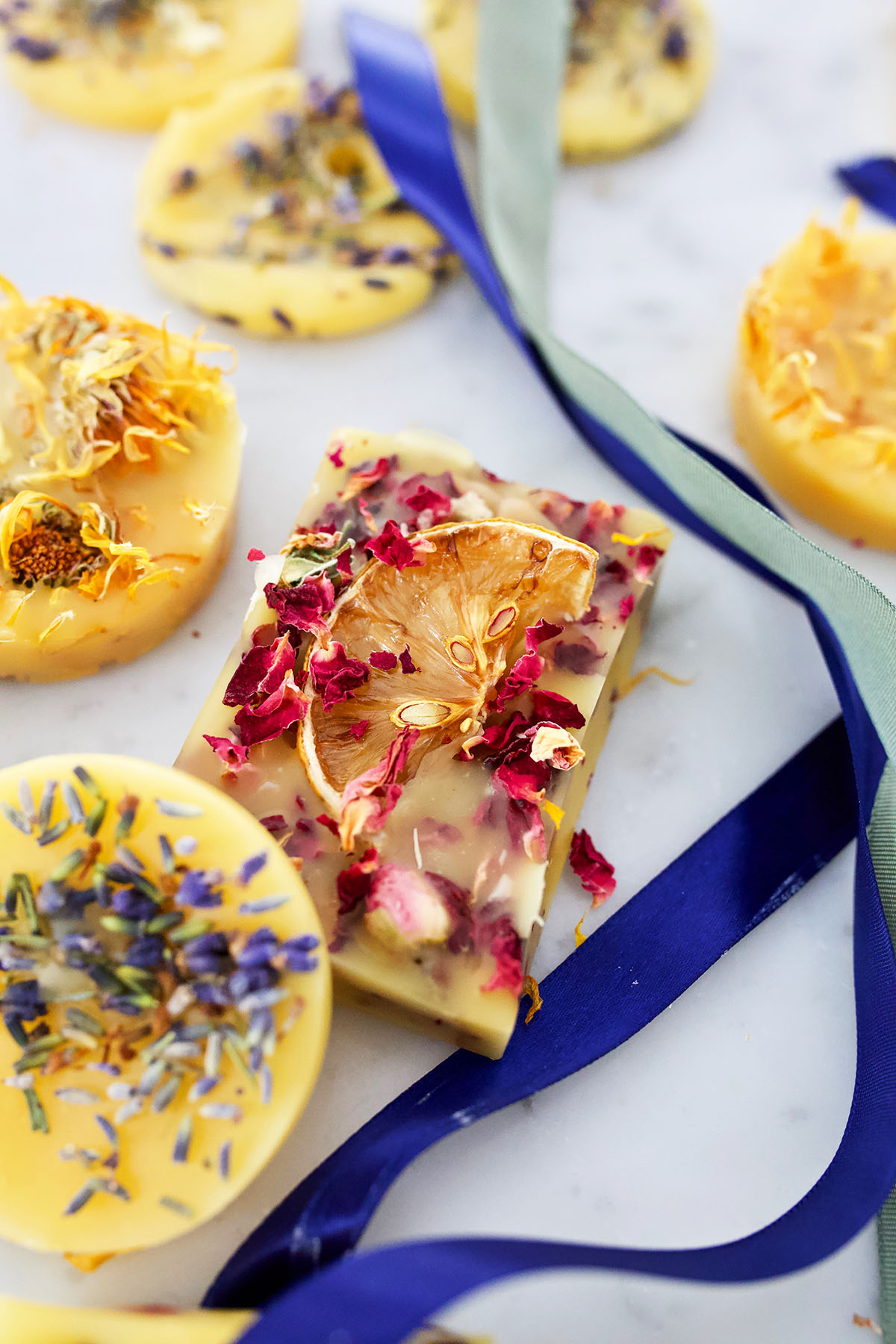
What is a Wax Sachet?
Wax sachets are made of soy wax or beeswax, dried herbs and fruits, and often whole spices, and they are an entirely natural way to fill your home with fragrance. Wax sachets encapsulate botanicals and their scent in wax, and when placed in a room, act as a beautiful aromatherapeutic source of fragrance. Simply place the wax sachet in a bowl or on a shelf and let it do its thing!
Many find wax sachets to be the perfect alternative to candles, particularly for those with pets that like to climb on furniture or for the safety of little hands that haven’t learned the danger of reaching towards aflame, as you can capture a fragrant cold throw without worrying about a flame. A cold throw is a term that describes the amount of fragrance which is emitted from a candle when it is not lit. Being as wax sachets are made of similar ingredients, the term applies here as well.
Speaking of candles, if you have ever ventured into the art of candle making, you’ll find herbal wax sachets a complete breeze to make! No need for measuring or centering any wicks, for instance. Wax sachets are an easy, practical, and beautiful way to capture the essence of your herb garden.
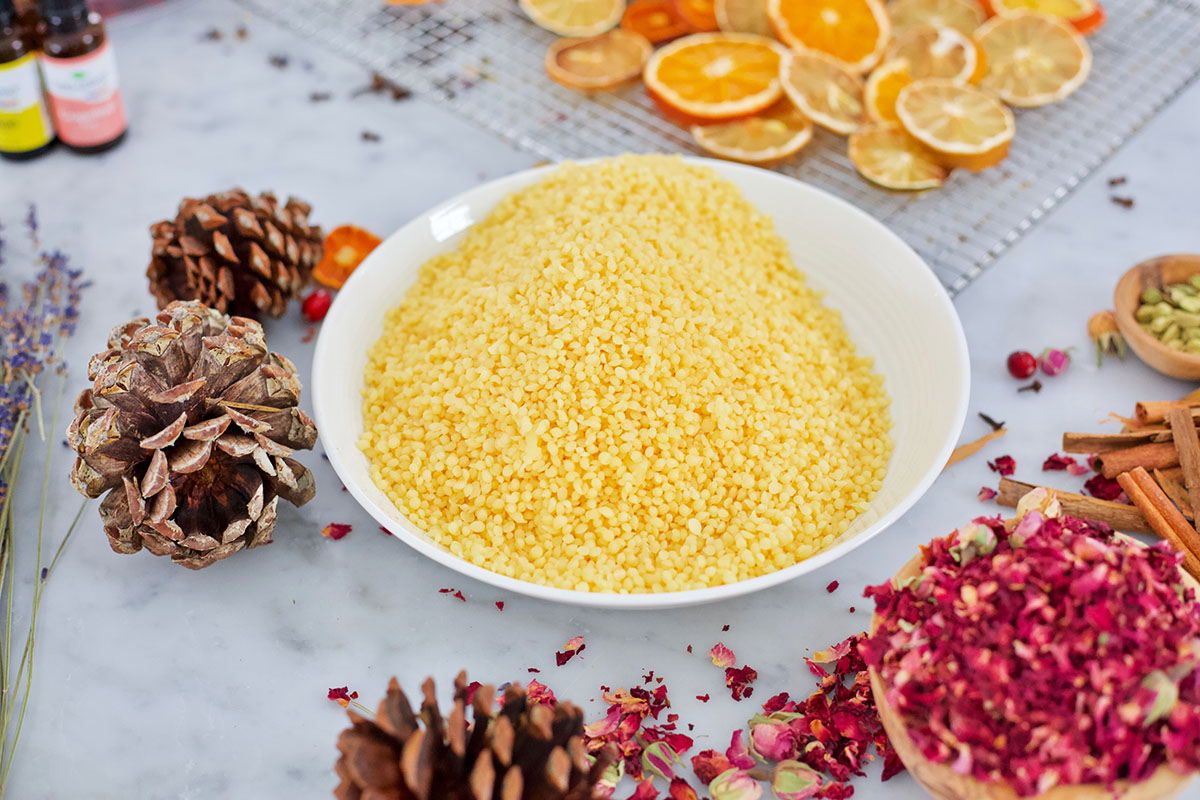
What Do You Need To Make Herbal Wax Sachets
DIY wax sachets are simple to make, lovely to smell, and ideal for gifting. All you need to make herbal wax sachets is a half a pound of wax, a handful of herbs, and a piece of fruit!
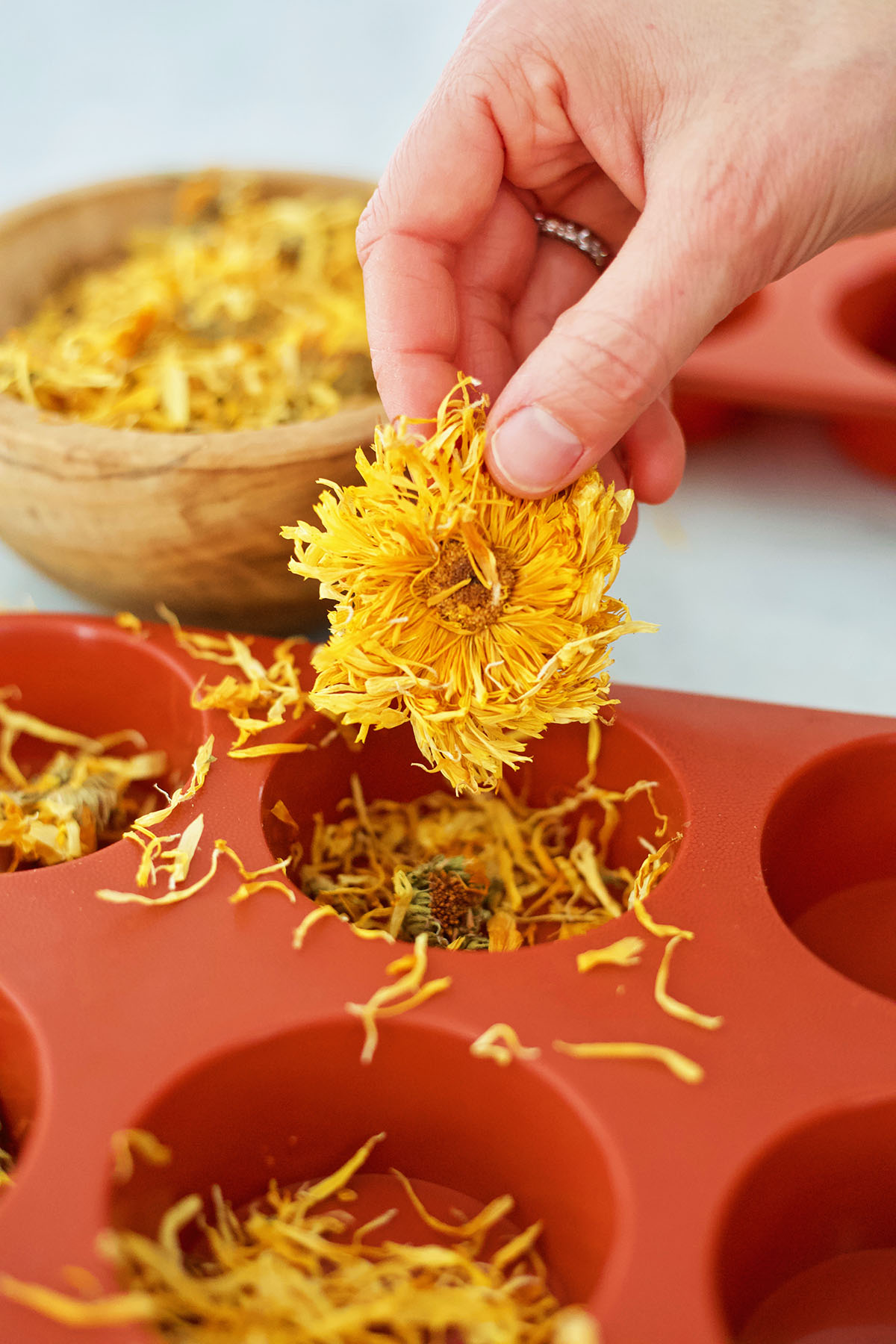
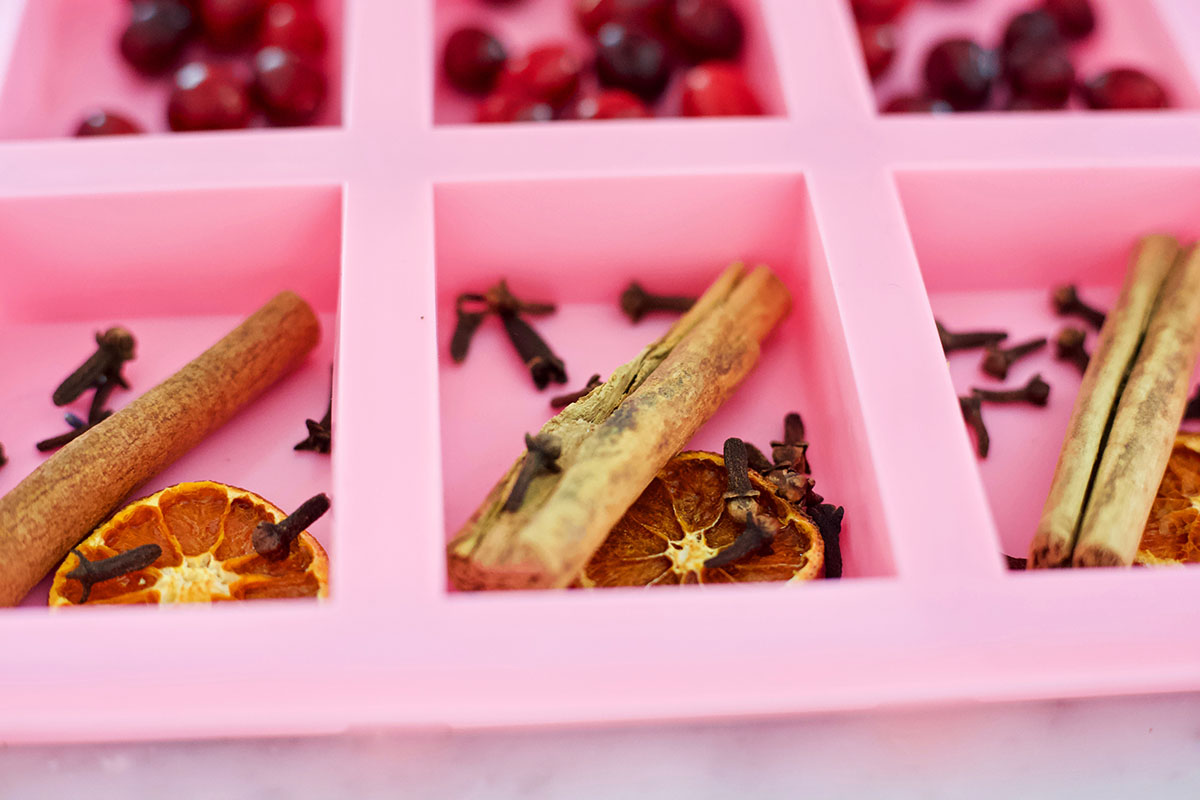
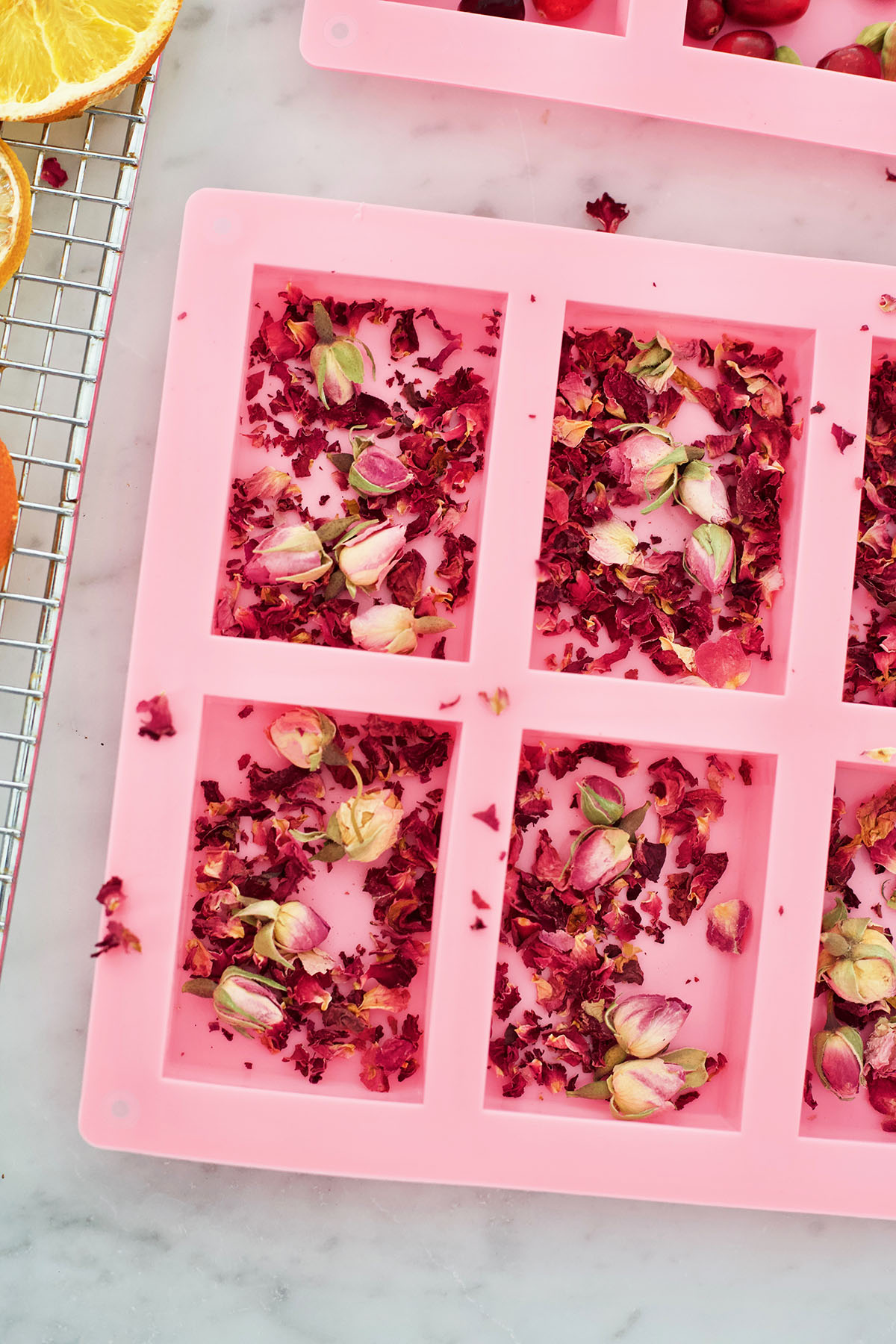
Let’s Start with the Herbs
You can handpick a variety of fresh herbs from your garden for crafting wax sachets, or you can use dried herbs.
The generous flower heads of calendula (Calendula officinalis) make a great herb to use in herbal wax sachets. Spanning 1-3 inches across with a central cluster of tubular flowers surrounded by rows of ray florets, calendula becomes a beautiful ornament in wax sachets. They also bloom nearly continuously from spring to autumn (as long as you pick the blossoms frequently) which makes them available for crafting for the better part of the year.
You can pair the ornamental blooms of calendula with rosemary (Rosmarinus officinalis), a fragrant member of the mint family (Lamiaceae). The needle-like dark green, leathery leaves are harvested for use in soaps, shampoos, and perfumes, and just as rosemary provides a refreshing fragrance to such products, it can also freshen up your home in the form of a wax sachet!
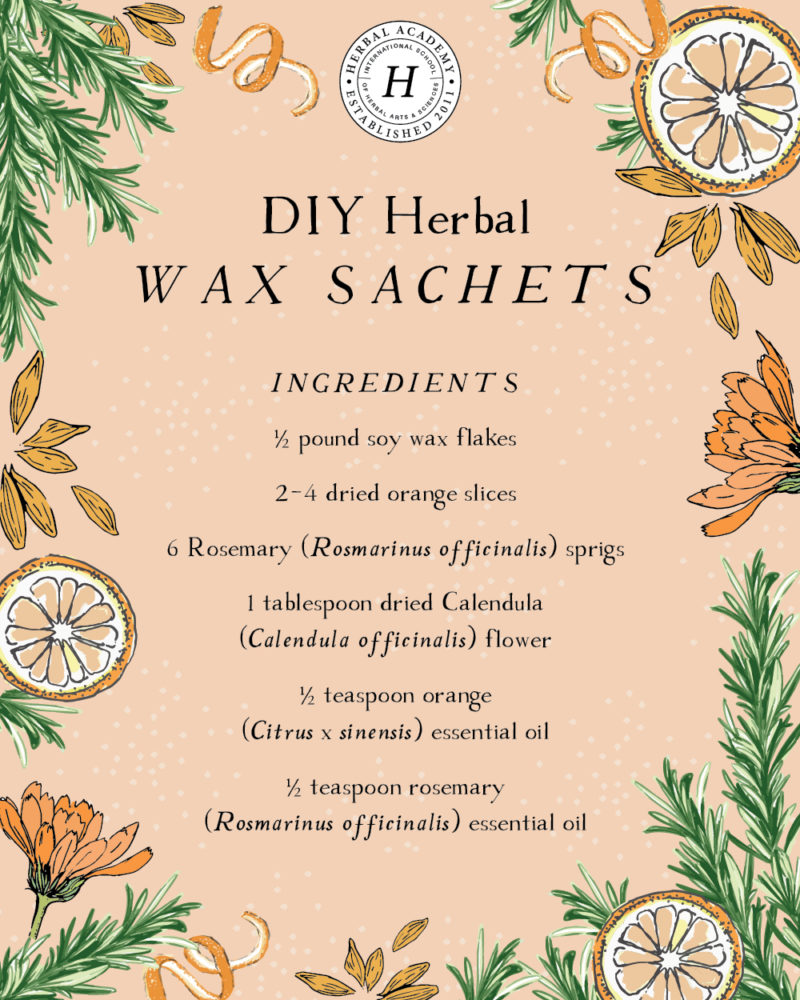
How to Prepare Fresh Picked Herbs for Wax Sachets:
When using fresh herbs from your garden, it’s best to dry them prior to adding them to a wax sachet. Calendula flower heads take well to towel drying flat spread across a large basket over the course of a few weeks, while rosemary is best dried by hanging in bundles. However, both can be successfully dried much quicker in a dehydrator as well.
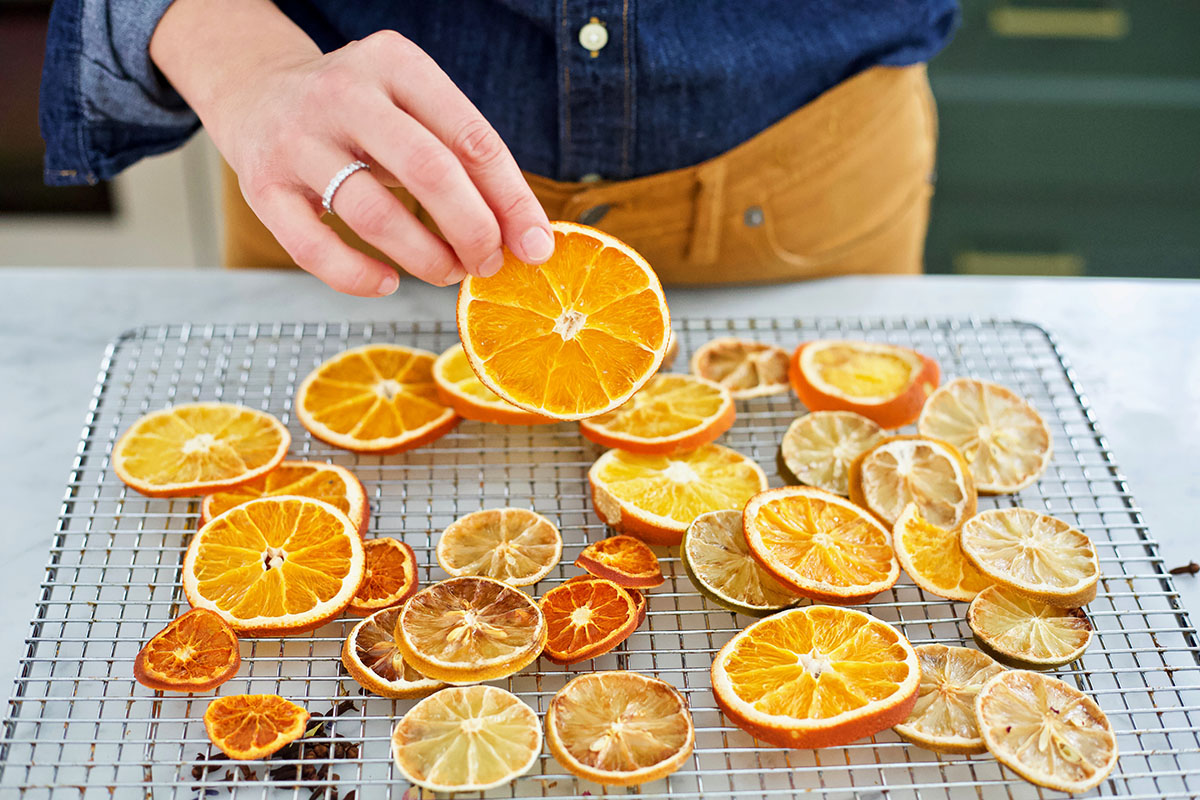
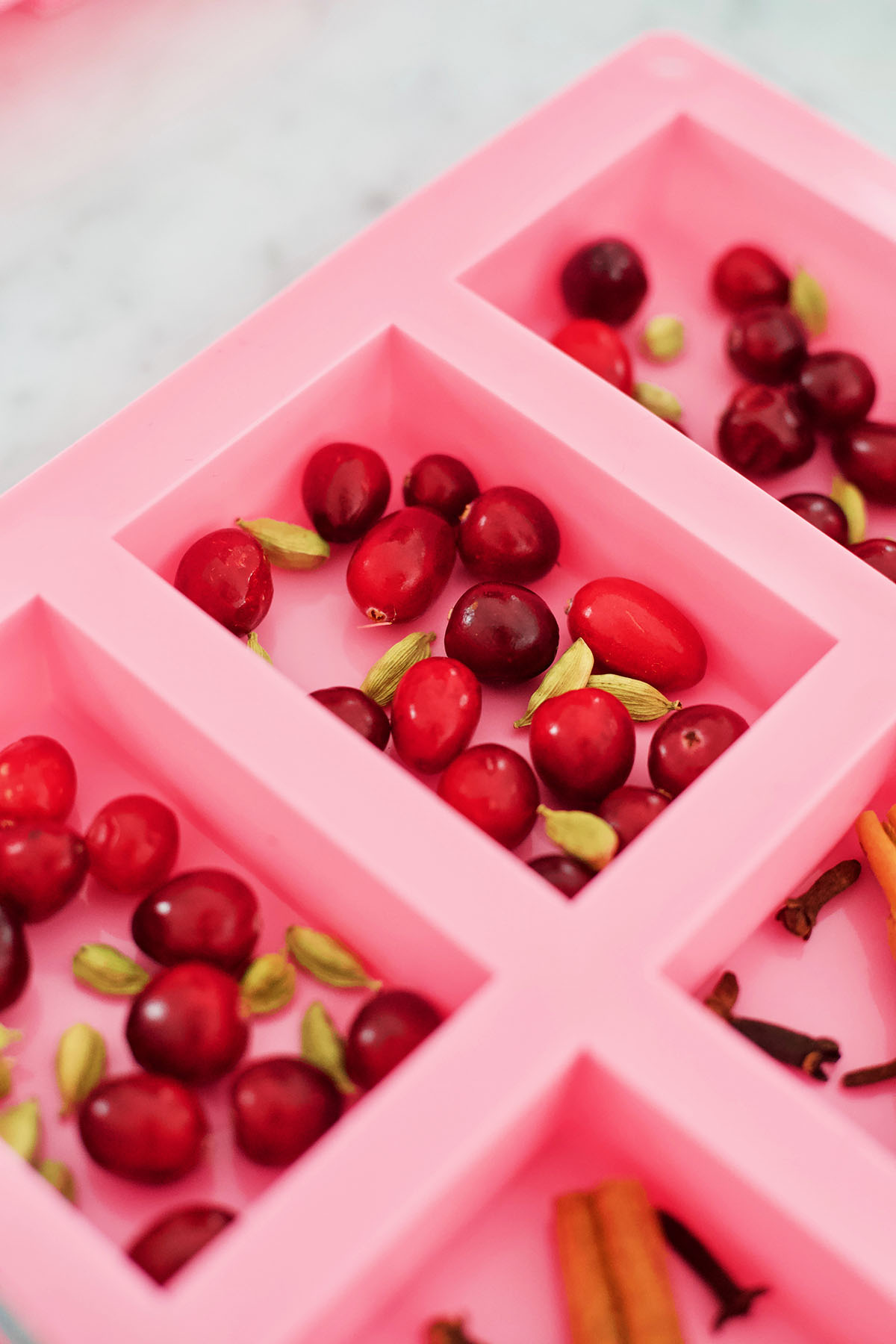
Which Fruits are Best for Wax Sachets?
Sliceable fruit, such as an apple, orange, or lemon, works best in a wax sachet because they need to be dried first. Drying oranges for decoration, in fact, is a tradition shared by many around the world. Their transparent round shape and warming citrus aroma make oranges a popular natural decoration. You can also purchase dried apple or dried orange and lemon peel if you prefer.
How to Dry Fruits to Make Herbal Wax Sachets:
Fruits can be quickly dried in a dehydrator along with your herbs, flooding your home with a sweet, flavorful scent like never before! However, the oven can also be used to dry fruit slices. Here’s how to dry sliced fruit in the oven.
- Wash and dry each piece of fruit. Slice the fruit into ¼-inch thick slices.
- Arrange the slices on a baker’s drying rack instead of directly on the oven rack to avoid slices falling to the bottom of the oven as they dry and slightly shrink. Place slices just far enough apart that the edges aren’t touching.
- Place the slices arranged on the baker’s drying rack into the oven and set the temperature to your lowest setting available. A temperature between 150 to 200 degrees Fahrenheit is best.
- Baking time will vary from 2 to 4 hours depending on the heat of your oven. The slices are dry once the center of the fruit has congealed or solidified and therefore dried out. Dried slices will feel crisp and lighter in weight than their fresh counterparts. It’s a good idea to set a timer so you remember to flip each slice and check on their drying progress every 45 minutes.
- Once dried, carefully remove the baker’s drying rack from the oven and place over the stovetop or over a heat resistance surface to cool. Allow each dried fruit slice to cool before use.
Once you’ve selected and dried your herbs and fruit, it’s time to get to the recipe!
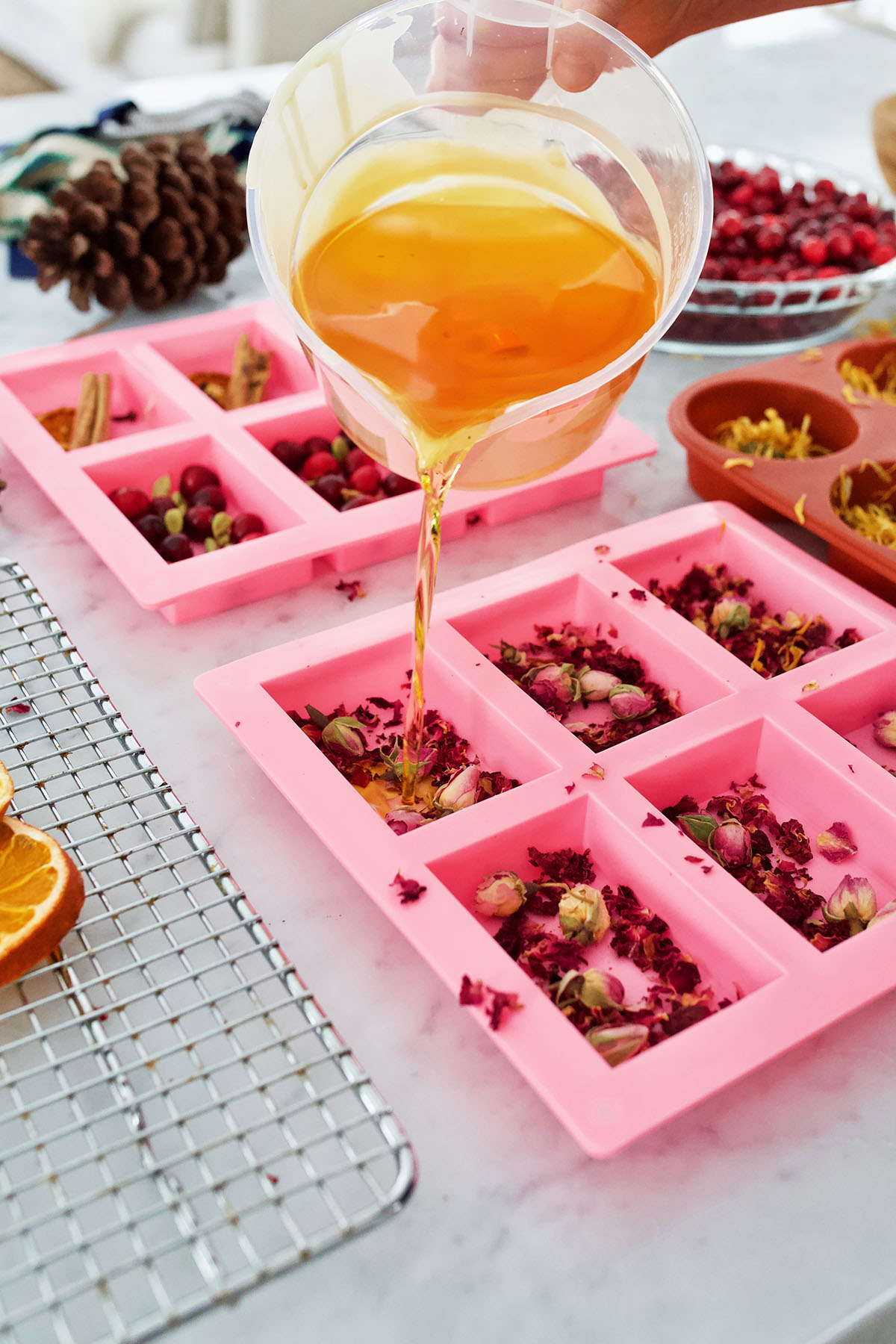
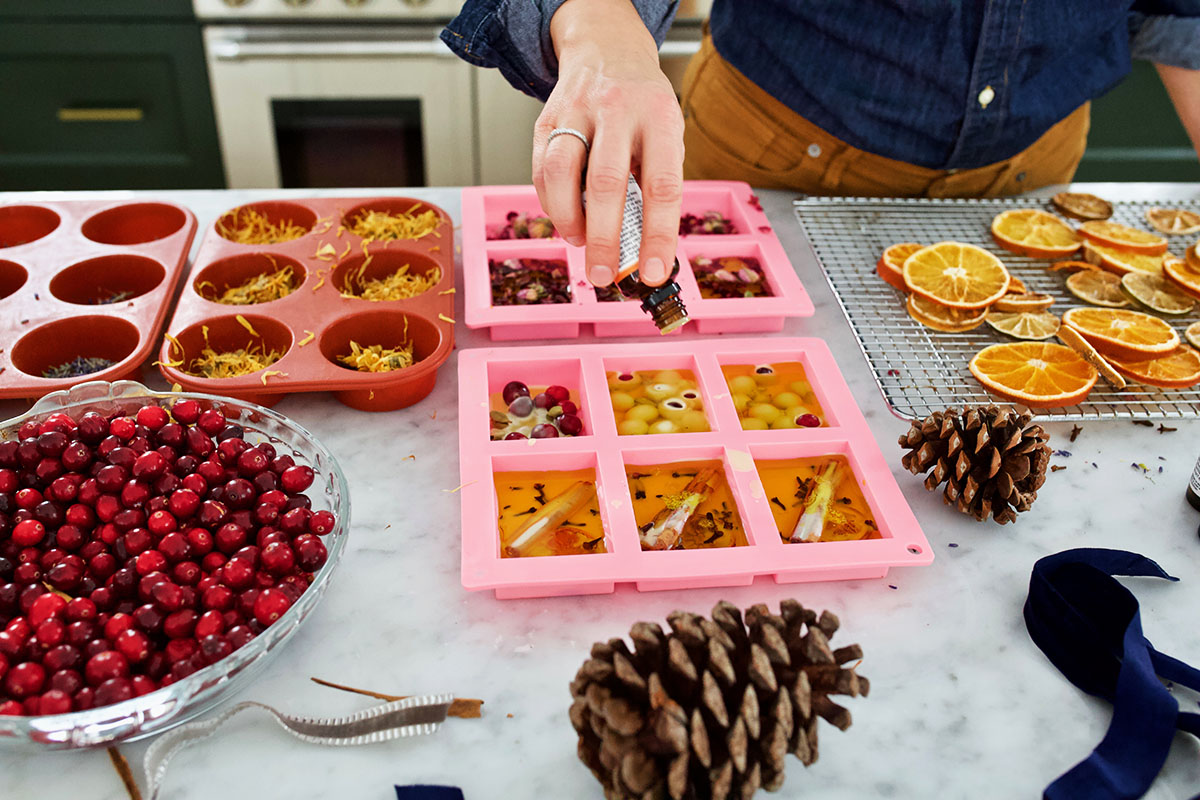
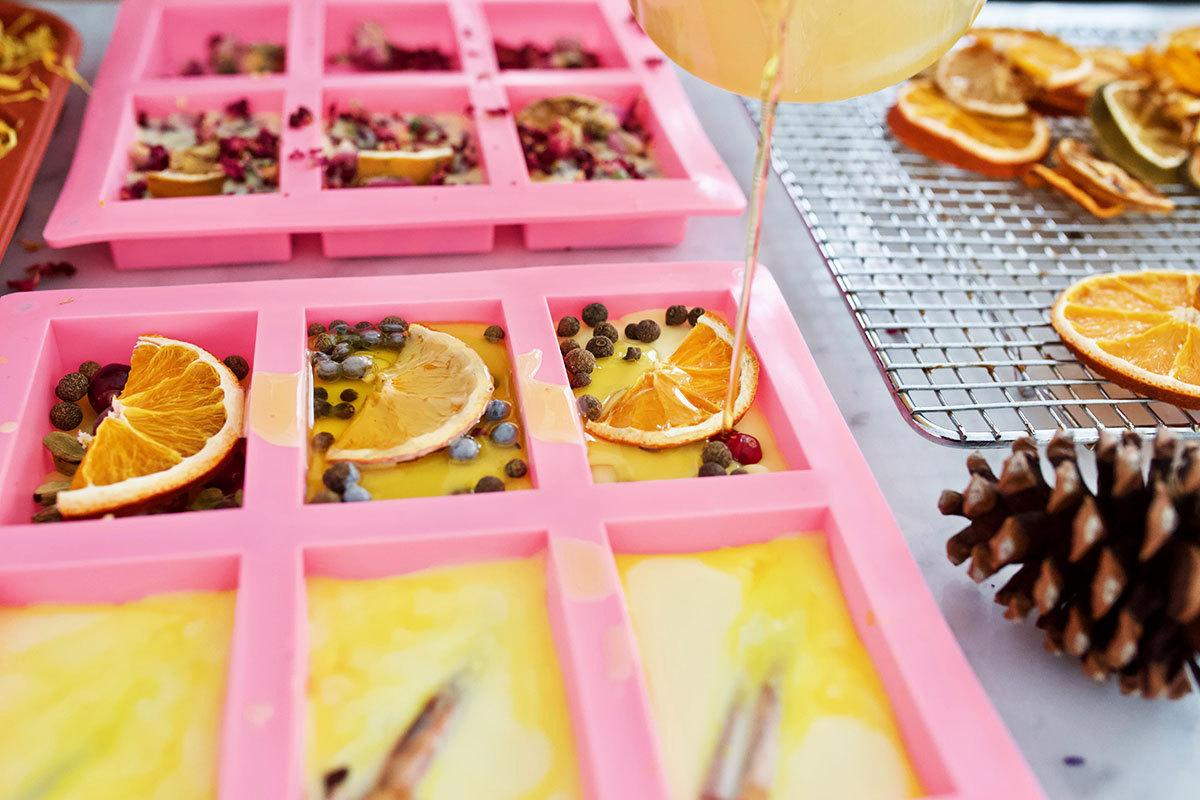
DIY Herbal Wax Sachets
½ pound soy wax flakes
2 to 4 dried orange slices
6 rosemary (Rosmarinus officinalis) sprigs
1 tablespoon dried calendula (Calendula officinalis) flower
½ teaspoon orange (Citrus x sinensis) essential oil
½ teaspoon rosemary (Rosmarinus officinalis) essential oil
- Safely melt ½ pound of soy wax flakes in a candle melting pitcher by placing the pitcher inside a large saucepan filled with 2 inches of water. Heat on medium to low heat with a gentle simmer, using the double boiler method on the stovetop. Stir often with a heat-resistant silicone spatula.
- Once melted, remove the pitcher from the stovetop immediately to avoid the wax becoming too hot, or worse, smoky. Clip a candle thermometer inside of the pitcher to measure the temperature of the wax. Allow the wax to cool to 125°F to 120°F before adding the orange and rosemary essential oils. Stir constantly for 1 to 2 minutes to thoroughly incorporate the scent.
- Next, pour the scented wax into a six-cavity rectangle silicone mold. Once you have filled each cavity, cut or tear a dried orange slice into smaller wedges and carefully place in each cavity. Add one to two large calendula flowers and top with a dried sprig of rosemary.
- Last, allow your herbal wax sachets to cool and harden for a few hours before removing each from the silicone mold.
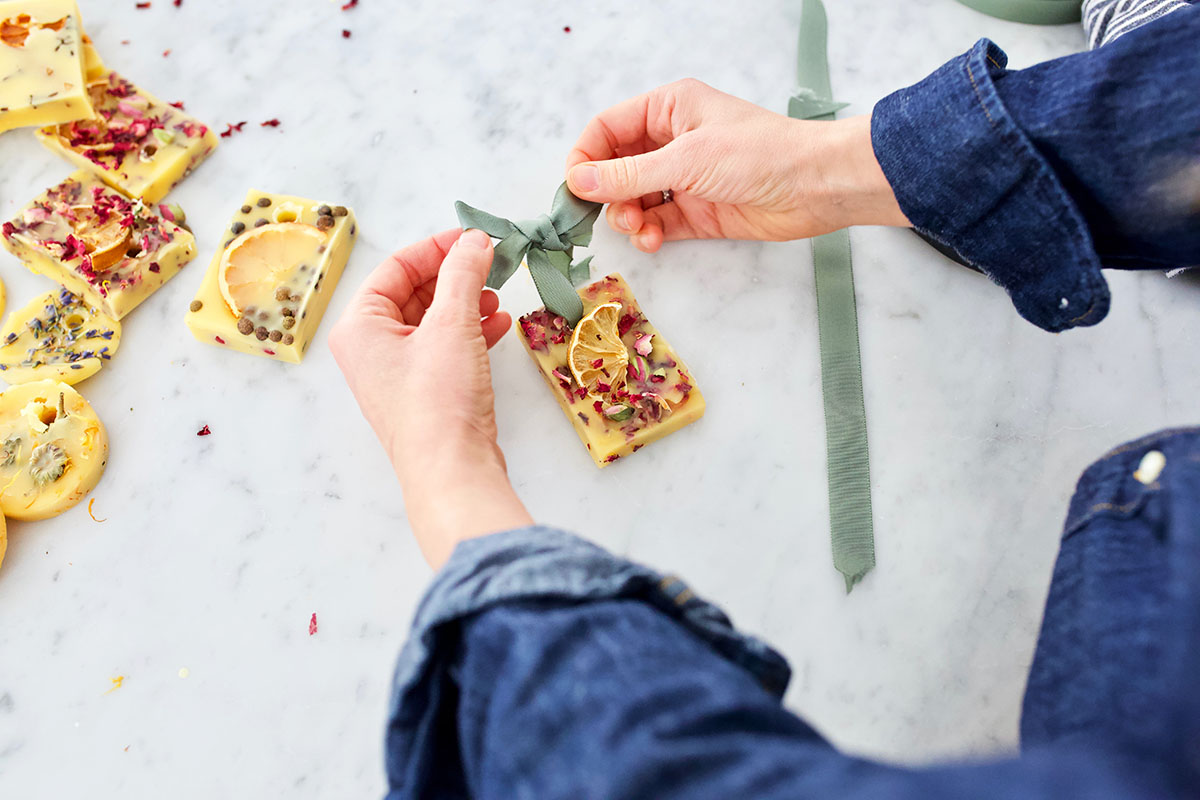
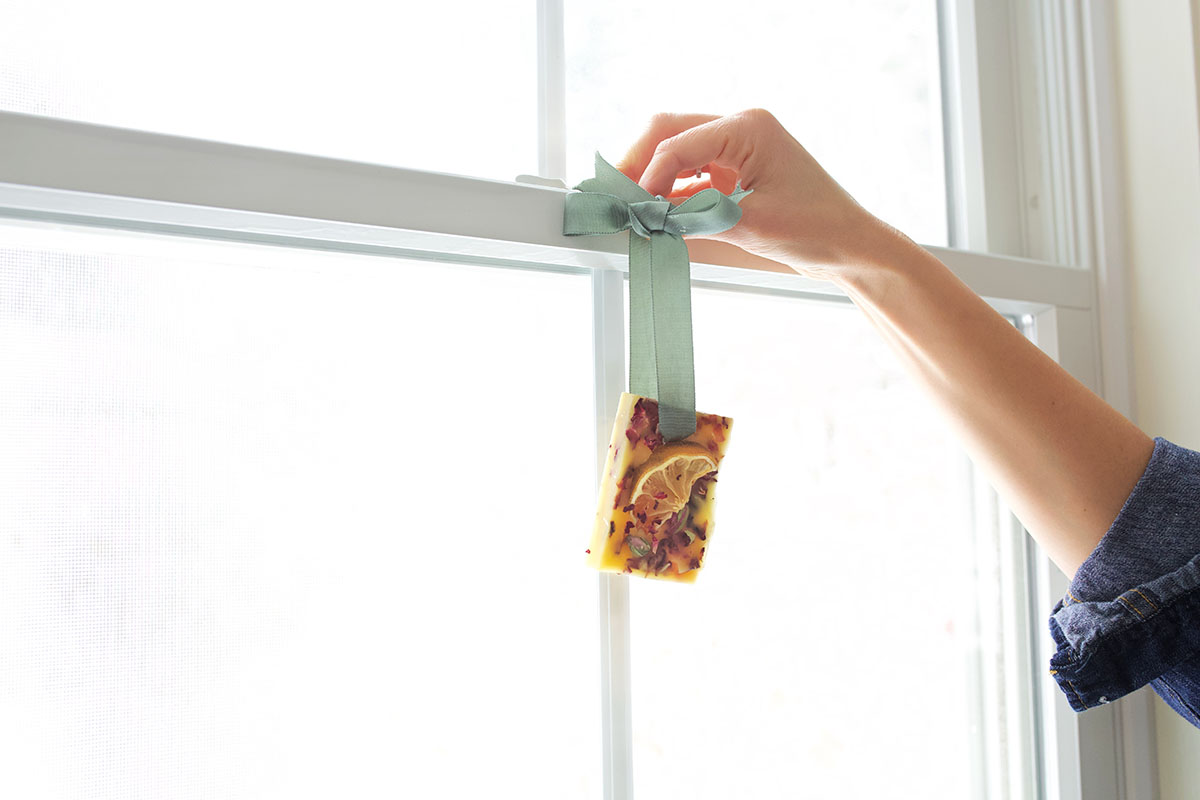
Using, Packaging, and Gifting Herbal Wax Sachets
This recipe makes 6 to 8 wax sachets depending on the silicone mold you choose. Each can be used similarly to linen sachets and potpourri, such as our holiday spice potpourri, by placing one in a decorative dish or bowl or tucking one in a desk or dresser drawer.
To package beautifully, place each herbal wax sachet in a small, natural linen drawstring bag. These bags can be tied closed and hung in the coat closet or pantry. No matter the arrangement, herbal wax sachets will add a breath of fresh air to any area you place them!
They also make beautiful zero-waste gifts for any occasion, and I’ve never found the scent to dissipate enough to warrant tossing one. Keep a few extras on hand to uplift a friend at a moment’s notice. No need to buy a gift, order flowers, or stop everything for a baking project, when you can choose from a collection of your own beautiful herbal wax sachets, perfectly ready to give.
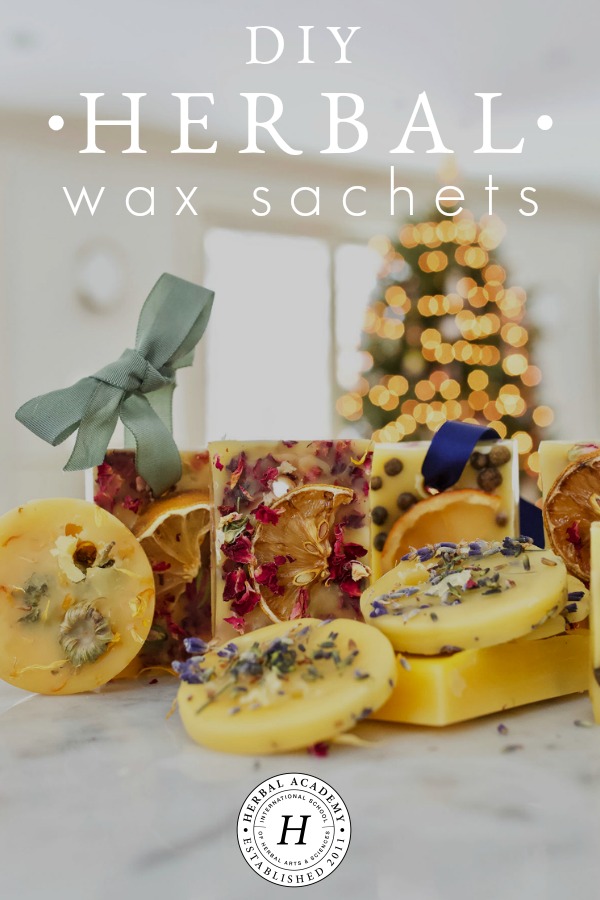
REFERENCES
Amerelo, M., & Geller, S. (2018). Chemicals in everyday products rival cars as a source of air pollution. Retrieved from https://www.ewg.org/news-and-analysis/2018/02/chemicals-everyday-products-rival-cars-source-air-pollution
Farley, P. (2016). Essential oil diffuser recipes: 100+ of the best aromatherapy blends for home, health, and family. Charleston, SC: CreateSpace.









